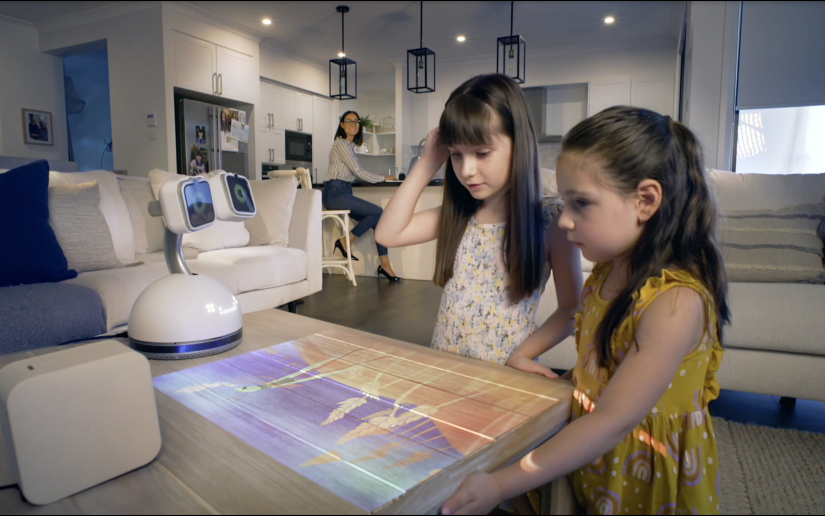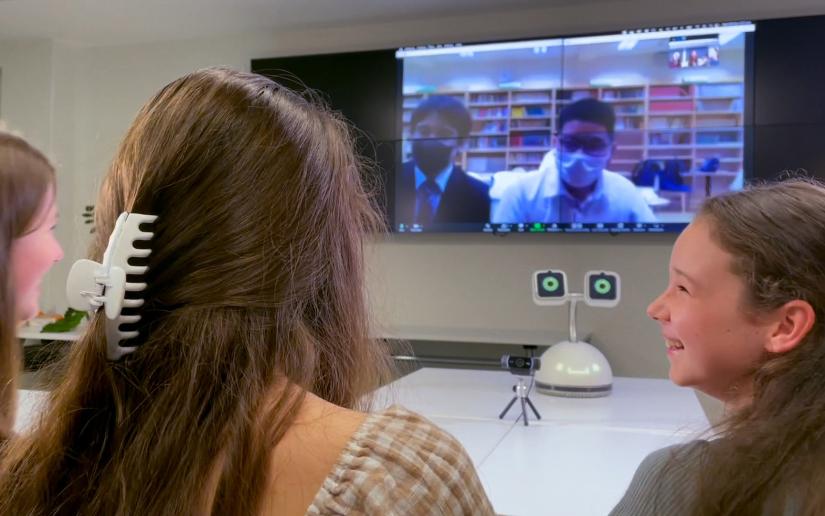Robotics has a diversity problem. UTS researchers might just have a solution.

Haru the Social Robot, shown here in storytelling mode, exists to ‘to create meaningful connections with people.’ Photo by Simon von Wolkenstein.
If you’ve ever wondered what a lack of diversity in robotics looks like, just do a Google image search for ‘humanoid robot’ and check out the simulated skin colour of the thousands of robots that fill your screen. (Hint: it’s white.)
The images are a metaphor for an industry that’s still struggling to attract and value diverse talent: in 2021, women made up only 15 per cent of people in STEM-qualified occupations in Australia, and adults from low socioeconomic backgrounds are underrepresented, too.
These challenges aren’t new, but they’re becoming even more pressing with the rise of social robotics, a discipline that produces robots designed to interact with humans.
In a not-too-distant future, robots could be training employees, teaching students or staffing a reception desk — but without diverse creators, can they really reflect the lived experience of people from all corners of society?
“Robotics has previously been very limited in its application to manufacturing, but as it becomes more mainstream, we’re going to have robots that are going to be working with every type of person,” says Dr Marc Carmichael, a researcher in the UTS Robotics Institute who specialises in the design of collaborative robots.
“We have to keep diversity in mind, otherwise we’re going to end up with solutions that might work for some people but not others.”
Upending the robotics value system
Universities have been grappling with diversity in STEM for years now. At UTS, initiatives like the Wanago and Women in Engineering and IT programs have been designed to address inequitable access to STEM subjects, degrees and careers.
These are important steps towards inclusion, but according to UTS lecturer Deborah Szapiro, an award-winning animator and social robotics expert in the Faculty of Arts and Social Sciences, more needs to be done.
Szapiro argues for a professional value system that preferences human, environmental and social values rather than productivity and efficiency. That means doing away with solely tech-oriented approaches and drawing in a diversity of skillsets and life experiences from other professional disciplines.
“To design innovative, autonomous systems with a goal of an equitable and inclusive society, we need to upend the value system in which we’re designing so that productivity and efficiency is much further down the list,” Szapiro says.
“That means we need interdisciplinary teams of creative practitioners, social scientists, psychologists, health professionals, environmentalists and lawyers, among others, along with the engineers and computer scientists.”

Haru the Social Robot will facilitate sessions with students from around the world to support inclusive practice and an acceptance of diversity as part of an ambitious new project. Photo by Simon von Wolkenstein.
Breaking down discipline barriers
Integrating non-STEM expertise into the world of robotics is central to Szapiro’s current research. For the last four years, she’s been part of an interdisciplinary collaboration with the Honda Research Institute — Japan (HRI-JP) to embed design and animation principles and socially responsible practices into the development of social robots.
Szapiro is developing the non-verbal communication skills and socially impactful creative content of Haru the Social Robot, who exists ‘to create meaningful connections with people.’ To date, Szapiro has worked in partnership with academics, artists and engineers to enhance Haru’s eye design and create a library of icons — called robomojis — to better facilitate human-robot communication.
Next up is an ambitious project called The Talking Room in which Haru will facilitate sessions with students from around the world to support inclusive practice and an acceptance of diversity.
“The UTS-HRI-JP partnership points to the strength of collaborations that draw together the humanities, arts and social sciences — known as HASS — with STEM in the development of technology,” Szapiro says.
From the lab to the classroom
Szapiro is passionate about embedding this approach into her teaching practice at UTS. Previously, she developed and ran a special project subject called Robot Elective, which challenged design students to create robots that delivered joy and social impact.
The bio-centric results — including a parkour exoskeleton that could be adjusted for all body types and abilities, an early detection bushfire mitigation system that benefits wildlife as well as humans, and a robot that could provide relief from period pain — provide further proof that tomorrow’s robotics teams will only benefit from a diversity of perspectives.
As such, universities have an important role to play in re-thinking who belongs in their robotics labs. To that end, Szapiro and Dr Carmichael are putting their heads together to brainstorm new interdisciplinary opportunities for students across multiple UTS faculties.
What that will look like is anyone’s guess — but the potential, they both agree, is massive.
“I come from more of a nuts-and-bolts robotics background; Deb is more about interactive and emotive robotics,” Dr Carmichael says.
“We want to put our students together and see what comes out.”

